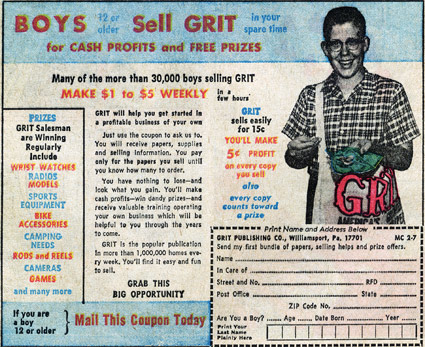
By G. Michael Dobbs
news@thereminder.com
Ah the innocence of youth! Perhaps young people today are less innocent – or gullible or ignorant – than I was back in the day.
I was undoubtedly an idiot, but I think many of my peers were as well. We were wide-eyed kids who assumed adults knew what they were doing and that ads told the truth.
I base my assertion on my fascination with the products advertised for kids in the back of comic books.
I had a fairly forbidden love with comic books due to the work of Dr. Fredric Wertham, a researcher who caused a national sensation in the 1950s. He found that juvenile delinquents read comic books, so therefore he concluded comic books caused delinquency.
That was a huge leap and his book, “The Seduction of the Innocent,” helped spur a national backlash against comic books, one that my mom took fairly seriously. She really didn’t like me reading superhero books and would basically only tolerate Disney comics.
Naturally, that only compelled me to read superhero comics – I was a Batman kid.
As I got older she relented quite a bit and by sixth grade I read every comic book on which I could get my hands.
What was almost as interesting as the superhero tales themselves were the ads for various products in the back. It seemed that for years the same groups of toys and novelties were regularly pitched to kids. All of them seemed so appealing and yet they had an air about them that made them seem unreal.
I wondered if the claims were true and if anyone ever bought any of these products. I never met a fellow comics fan who bought any of the following. Perhaps they are a bit ashamed for being taken in.
X-Ray Specs – do you remember that one? The ads claimed that by wearing them you could actually “see” – the ad put the verb in quotes – “the most (blushingly funny) amazing things!” We all knew what that meant – wink, wink, nudge, nudge – and they were only $1.25.
The Charles Atlas muscle building system was also a standard in the back of comics. “I can make a new man, too, in only 15 minutes a day!” the ad proclaimed. Atlas used “Dynamic Tension” to build muscles, something that sounded much more appealing than gym class. You could get his free book by sending a stamp to his office.
Sea Monkeys were a real head-scratcher. The ads claimed you could have “instant pets” by just adding water. In reality, sea monkeys were a type of brine shrimp that did not look anything like the illustrations that accompanied the ad.
According to the ad, “With boundless energy Super Seas Monkeys romp and play night and day. So full of fun, you’ll never tire of watching them swim, race, and take turns riding each other backs like cowboys on ponies.” Really?
I used to look at those ads and wonder just how any of it could be real. Again, it was only $1.25 and came with a money-back guarantee.
There were also real monkeys – spider monkeys – advertised for only $19.95 and guaranteed to be alive when delivered. This was an appealing idea that I knew would never pass by my parents.
Then there was the “Polaris Nuclear Sub” advertised that could seat “two kids” and could fire “rockets and torpedoes.” It was made of “200 pound test fiberboard” and came with “easy assembly instructions.”
According to the ad it was seven feet long in size and had a working periscope. Interestingly enough it has no warning that you should avoid putting it in the family’s swimming pool. It came for the astounding price of $6.98 and because of its size required a 75-cent shipping charge.
Then there was Grit, a venerable weekly newspaper aimed at rural America, which recruited delivery boys through ads in comics. “If you’re 12 years old or older you can be a happy prosperous GRIT salesman,” the ad proclaimed. Besides making money – you made a 5-cent profit on each copy you sold – you could also win valuable prizes.
This looked intriguing to me as a kid but what the heck was “Grit?” Newspapers were a key part of our household, but I had never seen it.
After years in the business, I’ve yet to see a copy. Grit is apparently a monthly magazine.
As mesmerizing as these ads were to me – and yes, there was a hypnotic coin device sold that could put people under your control – I never once ordered any of the items. Perhaps the $1.25 price tag for many of them was just too steep.
G. Michael Dobbs is the managing editor of Reminder Publications
and Prime’s local columnist.